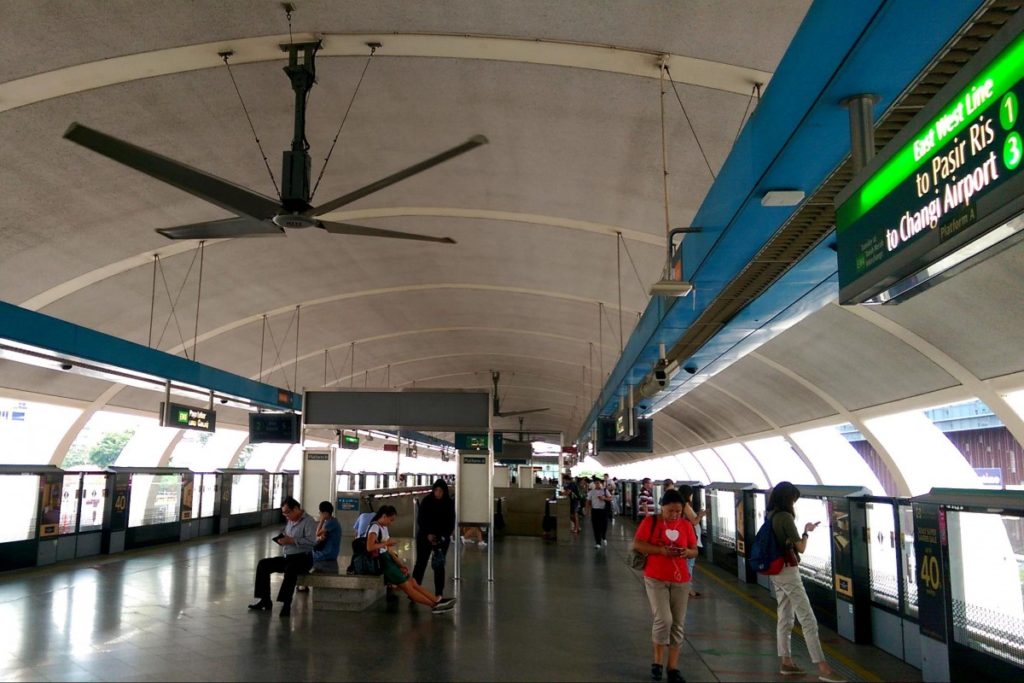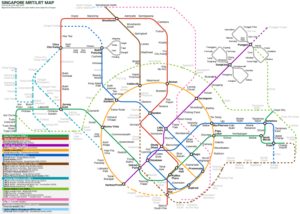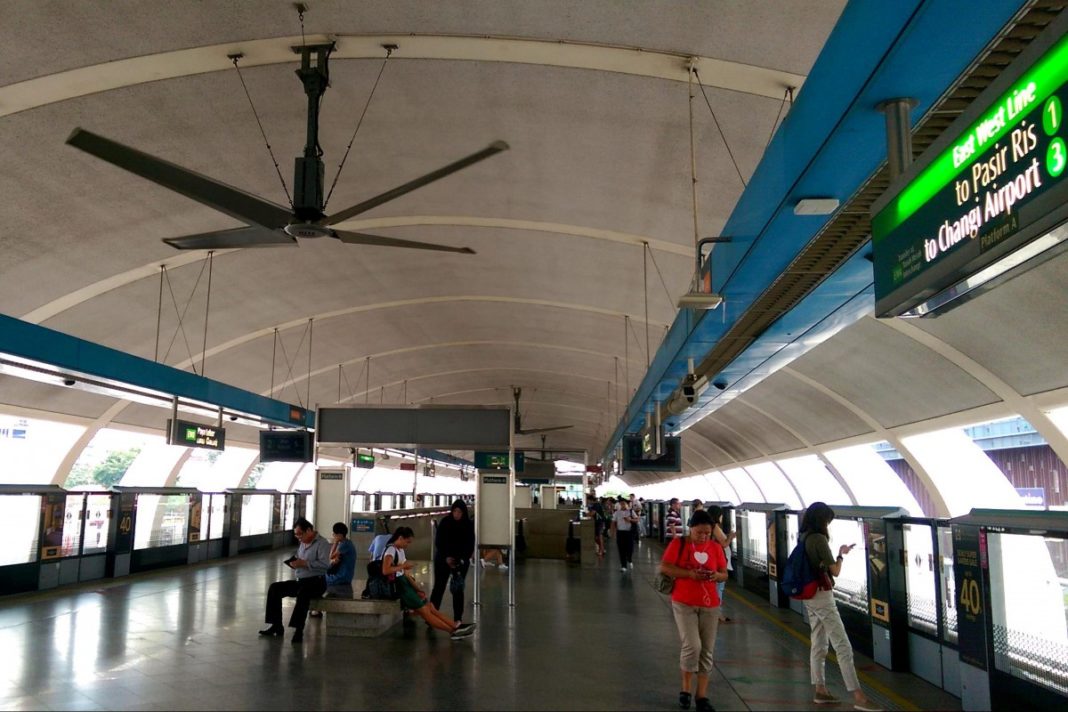The Mass Rapid Transit system, known by the initialism MRT in common parlance, is a rapid transit system in Singapore and the island country’s principal mode of railway transportation. The system commenced operations in November 1987 after two decades of planning with an initial 6 km stretch consisting of five stations.

The MRT network encompasses 216 km of the grade-separated route on standard gauge. There are 127 operational stations (28 of which are interchange stations) dispersed across six lines arrayed in a circle-radial topology. The network is scheduled to double in length to 400 km by 2040 as a result of ongoing extension works to its existing lines and the construction of three new lines.

The MRT is mostly automated and is the most extensive driverless rapid transit system in the world. Asset renewal works are periodically carried out to modernize the network and ensure its continued reliability; all stations feature platform screen doors, Wi-Fi connectivity, lifts, climate control, and accessibility provisions, among others.

Much of the early network is elevated above the ground on concrete viaducts, with a small portion running at grade; newer lines are largely subterranean, incorporating several of the lengthiest continuous subway tunnel sections in the world. The number of underground stations doubles as purpose-built air raid shelters under the operational authority of the Singapore Civil Defence Force (SCDF); these stations incorporate deep-level station boxes cast with hardened concrete and blast doors fashioned out of reinforced steel to withstand conventional aerial and chemical ordnance.
According to Wikipedia















